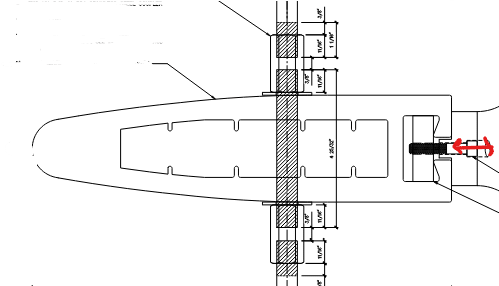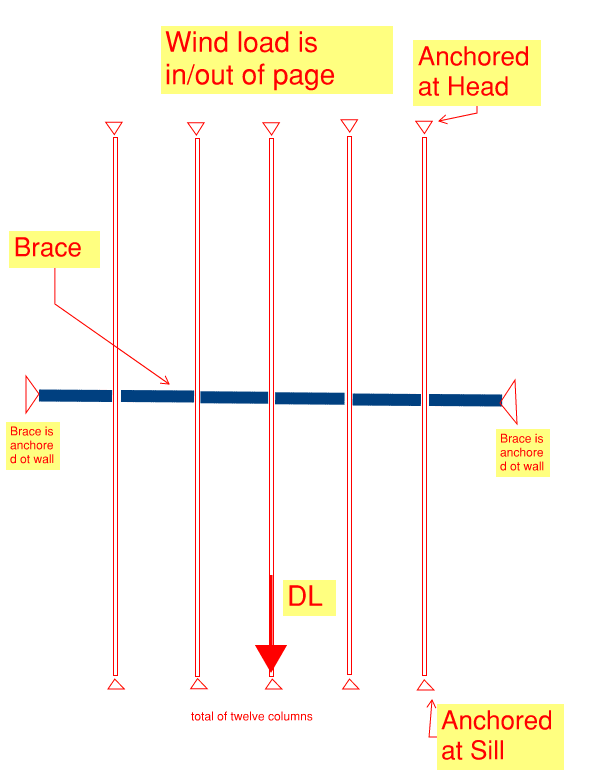The steel rod assembly below is used to brace this Egg like looking vertical aluminum member for the purpose of stress reduction.
This vertical member is subject to wind load (red arrow) and axial ( dead load into the page transferred to ground) only.
There are 12 such columns at 5 ft on center. All braced with the same rod assembly below.
1- Any issues or concerns with rod being used as a brace?
2- What is the load on the brace?
3- Do you consider this aluminum member a beam, a column, or a beam column?
4- Does the rod need to be anchored to the wall on each side or not?


This vertical member is subject to wind load (red arrow) and axial ( dead load into the page transferred to ground) only.
There are 12 such columns at 5 ft on center. All braced with the same rod assembly below.
1- Any issues or concerns with rod being used as a brace?
2- What is the load on the brace?
3- Do you consider this aluminum member a beam, a column, or a beam column?
4- Does the rod need to be anchored to the wall on each side or not?


